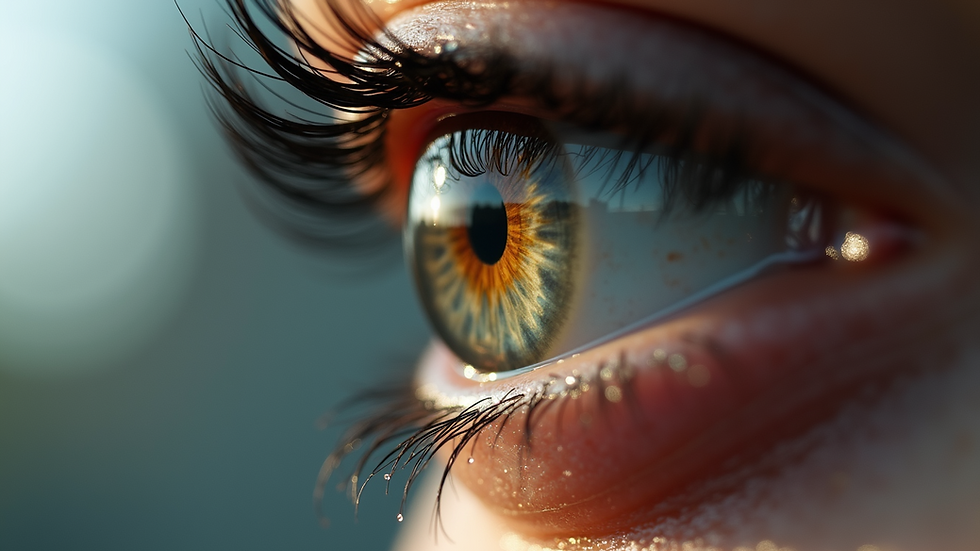Dry eyes and how it can be treated
- sohraab yadav
- Mar 30, 2023
- 3 min read
Dry eye is a common condition in which the eyes do not produce enough tears or the tears evaporate too quickly. This leads to a range of symptoms, including discomfort, irritation, and even blurred vision. Dry eyes can be caused by a variety of factors, including aging, hormonal changes, certain medications, and environmental factors like dry air and wind.
Fortunately, there are several management strategies that can help relieve the symptoms of dry eyes and improve the quality of life for those who suffer from this condition. In this blog post, we’ll explore some of the most effective approaches to managing dry eyes.
Artificial tears
Artificial tears are the most common treatment for dry eyes. They work by lubricating the surface of the eye and providing relief from discomfort and irritation. There are many different types of artificial tears available, so it’s important to choose the right one for your needs. Some artificial tears are designed to be used during the day, while others are formulated for use at night. Some are thicker and more viscous, while others are thinner and more watery.
If you suffer from mild to moderate dry eyes, over-the-counter artificial tears may be sufficient to relieve your symptoms. However, if your dry eyes are severe or persistent, your doctor may recommend prescription-strength artificial tears or other treatments.
Lifestyle changes
Making simple lifestyle changes can also help manage dry eyes. For example, avoiding dry, dusty environments or wearing protective eyewear in windy conditions can reduce exposure to irritants that can exacerbate dry eyes. Additionally, taking frequent breaks when reading or working on a computer can help reduce eye strain and promote tear production.
Staying hydrated is also important for maintaining healthy eyes. Drinking plenty of water and avoiding dehydrating beverages like alcohol and caffeine can help keep your body and eyes well-hydrated.
Omega-3 supplements
Omega-3 fatty acids are important for maintaining healthy eyes and tear production. Studies have shown that taking omega-3 supplements can reduce symptoms of dry eyes and improve tear production. Omega-3 supplements are available in several forms, including fish oil, flaxseed oil, and krill oil.
Prescription medications
In some cases, prescription medications may be necessary to manage dry eyes. Your doctor may recommend medications that help increase tear production, reduce inflammation, or suppress the immune system. These medications may be in the form of eye drops, oral medications, or ointments.
Forceps expression / LipiFlow
LipiFlow is a newer treatment option for dry eyes that uses thermal pulsation to remove blockages in the meibomian glands. These glands are responsible for producing the oily layer of tears that prevents evaporation. By unclogging these glands, LipiFlow can improve tear production and reduce symptoms of dry eyes. This treatment is usually done in an ophthalmologist’s clinic and takes about 15 minutes. A similar result can be achieved by gently compressing the meibomian glands with forceps after using anaesthetic drops. This can be peformed by an ophthalmologist.
BlephEx
BlephEx is another in-clinic treatment that can help manage dry eyes. This treatment involves using a small, rotating brush to remove debris and bacteria from the eyelids and lashes. By keeping the eyelids and lashes clean, BlephEx can reduce inflammation and improve tear production.
Punctal plugs
Punctal plugs are small, silicone or acrylic devices that are inserted into the tear ducts to help prevent tears from draining too quickly from the eyes. This allows the tears to stay on the surface of the eye longer, providing greater lubrication and relief from dry eyes. Punctal plugs are usually recommended for people with moderate to severe dry eyes who have not responded well to other treatments.

In conclusion, dry eyes can be a frustrating and uncomfortable condition, but there are many effective management strategies available.




Comments